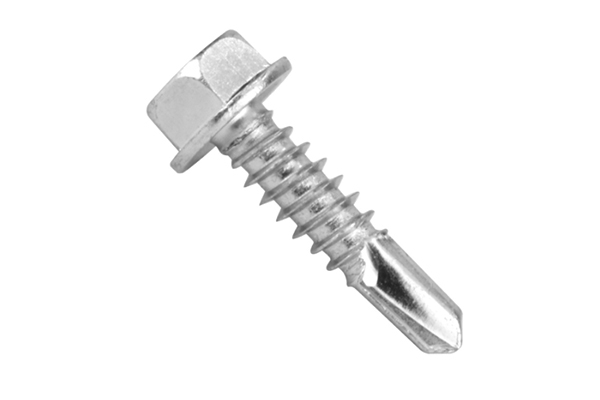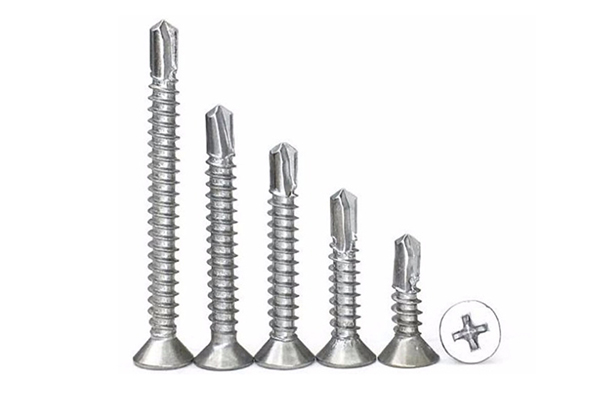This article explores the key differences between self-drilling and self-tapping screws, two common types of fasteners used in various construction, mining, and industrial applications. Understanding these differences is crucial for selecting the right screw for your project, ensuring efficiency, safety, and the long-term integrity of your work. Whether you’re a seasoned professional like Mark Davis or new to the field, this guide will provide you with the knowledge you need. We at Jiufu, led by Allen in China, understand these needs and strive to offer the best solutions.
1. What are Self-Tapping Screws?
Self-tapping screws are designed to tap their own threads as they are driven into a material. This means they create a mating thread in the material they are being fastened to. This fastener is excellent for applications where you need a strong hold, and pre-drilling a pilot hole is either undesirable or impractical. Self-tapping screws are typically used in materials like metal, plastic, and even hard wood.
It’s important to note that while self-tapping screws can cut their own threads, they don’t remove material like a drill bit. Instead, they displace the material around the screw, creating a tight and secure fit. The effectiveness of a self-tapping screw depends on the material it’s being driven into and the screw’s thread design. Using them in the right circumstances can save a great deal of time on the building site.
2. What are Self-Drilling Screws?
Self-drilling screws, as the name suggests, combine the functions of a drill bit and a screw. These screws have a drill-shaped point that allows them to drill their own hole and tap threads simultaneously. This eliminates the need for a separate pilot hole, making installation faster and more efficient. Self-drilling screws are most commonly used in metal applications, especially when working with sheet metal.
The design of the self-drilling screw’s tip is key to its performance. The tip is shaped like a drill bit, with flutes to remove the drilled material. This type of screw is incredibly useful in applications like attaching metal roofing or siding, where speed and accuracy are essential. Self-drilling screws offer a one-step fastening solution, making them a favorite among many contractors.
3. What is the Core Material Difference?
The material used to manufacture both self-drilling and self-tapping screws is crucial for their performance and durability. While both types of screws are often made of steel, variations exist. Self-tapping screws may be made from softer steel, especially those intended for use in wood or plastic. Self-drilling screws, particularly those designed to go through metal, are frequently made from hardened steel or even stainless steel to withstand the stress of drilling.
You might also find screws made from other materials like brass or aluminum, depending on the specific application. For example, brass screws are often used in marine applications due to their corrosion resistance. It’s also vital to consider the material you are fastening onto when selecting a screw. Using a hardened steel screw on a soft material could cause damage. For specialized applications, options like our Self-drilling Hollow Anchor provide superior performance.
4. How Do Thread Designs Differ Between the Two Screw Types?
The thread design is another significant difference between self-drilling and self-tapping screws. Self-tapping screws typically have a coarser thread pattern designed to grip the material firmly as it taps its own threads. The thread may be continuous or interrupted, depending on the specific type and intended use.
Self-drilling screws, on the other hand, have a thread that’s more closely aligned with the drill point. The thread starts immediately after the drilling tip, allowing for a seamless transition from drilling to fastening. The thread design of self-drilling screws is engineered to efficiently remove material and create a secure hold in metal. There are many different kinds of fasteners out there, but the thread is a defining feature of screws.
5. What Head Types and Sizes are Available?
Both self-drilling and self-tapping screws are available in a wide variety of head types and sizes. Common head types include flat, pan, hex, oval, and bugle. The choice of head type depends on the application and the desired finish. For example, a flat head screw can be driven flush with the material, while a hex head screw provides a greater surface area for gripping with a wrench.
Size also varies significantly, from tiny screws used in electronics to large screws used in heavy construction. Screw sizes are typically designated by a number (e.g., #8, #10, #12) that corresponds to the screw’s diameter, and by the screw’s length. Choosing the correct size is crucial for ensuring a secure and reliable connection. At Jiufu, we cater to a range of size requirements, as seen in our Nut selection.
6. Do Standards Vary for Self-Drilling and Self-Tapping Screws?
Yes, standards for self-drilling and self-tapping screws vary depending on the region, application, and manufacturer. Organizations like ISO (International Organization for Standardization) and ASTM (American Society for Testing and Materials) provide standards that specify dimensions, material properties, and performance requirements for various types of screws.
Adhering to these standards is essential for ensuring the quality and reliability of the screws. Reputable manufacturers, like Jiufu, will clearly indicate which standards their products meet. For customers like Mark Davis, who prioritize quality and certifications, understanding these standards is key when making purchasing decisions. We take pride in complying with international safety regulations, a crucial aspect for our B2B clients.
7. What Are the Different Drive Types Used?
The drive type refers to the recess in the screw head that allows a tool, such as a screwdriver or drill, to drive the screw into the material. Common drive types include Phillips, slotted, square, Torx, and hex. The choice of drive type often depends on personal preference, the tool availability, and the torque requirements of the application.
Phillips and slotted drive types are the most commonly used, but square and Torx drives offer greater resistance to cam-out (slipping of the tool). Hex drives are typically used with hex head screws and are driven with a wrench or socket. The drive type should be matched to the appropriate tool to prevent damage to the screw head and ensure efficient installation.
8. How Does Screw Length Impact Application?
The length of the screw is a critical factor to consider. The screw must be long enough to penetrate the materials being joined and provide a secure hold. However, using a screw that is too long can cause problems, such as protruding through the other side of the material or creating a weak point.
As a general rule, the screw should be long enough to fully engage with the underlying material. For example, when attaching plywood to lumber, the screw should penetrate at least halfway into the lumber. When working with metal, the screw should extend past the metal layers by at least three thread pitches. The precise requirements will vary based on the specific application and the materials involved.
9. Which Screw is Right for My Project: Wood or Metal?
Choosing between a self-drilling and a self-tapping screw often comes down to the material you’re working with. For wood applications, self-tapping screws are generally the better choice. Their coarser threads are designed to grip wood fibers effectively, providing a strong and secure hold. While self-drilling screws can be used in wood, they are not typically necessary and may even cause splitting, especially in harder woods.
For metal applications, self-drilling screws are usually preferred. Their ability to drill their own hole and tap threads in a single step makes them much more efficient than self-tapping screws, which would require a pre-drilled pilot hole. However, self-tapping screws can be used in metal, particularly thin metal, if a pilot hole is pre-drilled.
10. Where Can I Buy High-Quality Self-Drilling and Self-Tapping Screws?
Availability of these screws is widespread. You can find them at hardware stores, home improvement centers, and online retailers. However, for large-scale projects or specialized applications, it’s often best to buy directly from a manufacturer or a specialized supplier, lead by a seasoned pro. Jiufu, as a factory with 7 production lines based in China, specializes in self-drilling anchor systems and drilling tools. We export to major markets like the USA, North America, Europe, and Australia.
Our products, including a comprehensive range of self-drilling anchor tools and drilling equipment, are designed to meet the needs of construction, mining, and tunneling companies. We emphasize high-quality materials, reliability, durability, and easy installation. Our products comply with international safety standards, addressing the key concerns of our customers like Mark Davis. Consider viewing our Washer page for related components. We supply to businesses, providing reliable service.
My name is Allen, and I lead the team at Jiufu. We supply what you need on your site. We know what it takes to do the job right.
Key Takeaways:
- Self-tapping screws tap their own threads but don’t drill a hole.
- Self-drilling screws both drill a hole and tap threads.
- Material choice (e.g., steel, brass) depends on the application.
- Thread design varies between the two screw types to optimize performance.
- Various head types, sizes, and drive types are available.
- Adherence to standards (ISO, ASTM) is crucial for quality.
- Screw length must be appropriate for the materials being joined.
- Self-tapping screws are generally better for wood; self-drilling for metal.
- For bulk and specialized needs, purchasing from a manufacturer like Jiufu is recommended.
- Jiufu meets international standards and offer a wide selection.
Post time: 3 月-10-2025
















